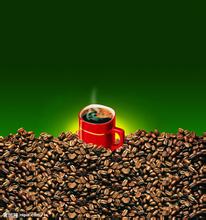The brewing process from a coffee bean to a cup of coffee
The brewing process from a coffee bean to a cup of coffee
There is also a popular story about an Arab (or Egyptian) shepherd who found that his goat became more energetic after eating coffee fruit. He reported his findings to the abbot of the local monastery. The abbot conducted experiments on monks and found that this soup could keep them awake during night prayers.
It is recorded that in 1454 the commentator of the Islamic Code of Aden visited Ethiopia, where he saw his countrymen drinking coffee and sent someone to buy some coffee beans when they returned home. This drink not only frees him from illness, but also clears his head. Soon, coffee became popular among Islamic monks.
Coffee consumption and cultivation in Yemen can be traced back to 1454. The government allowed drinking and growing coffee that year, because the government may find that the exciting function of coffee is preferable to the hypnotic function of gat. Gat was widely planted and used nationwide at that time.
The word coffee comes from the Latin word for the genus coffea. This genus is a member of Rubiaceae. It has more than five hundred species and 6000 varieties, most of which are heat-stagnant trees and shrubs.
Linnemas, a Swedish botanist in the 18th century, described this genus, but botanists disagreed on its precise classification. There may be at least 25 major varieties of coffee, all of which are native to tropical Africa and some islands in the Indian Ocean. However, due to the varieties of trees and seeds, they are also different. All kinds of coffea are woody plants, but they may be low shrubs or trees higher than 10 meters, and the leaves vary in color from light yellow to purple.

Important Notice :
前街咖啡 FrontStreet Coffee has moved to new addredd:
FrontStreet Coffee Address: 315,Donghua East Road,GuangZhou
Tel:020 38364473
- Prev

The higher the altitude, the better the coffee beans.-the finer the coffee beans, the better?
The higher the altitude, the better the coffee beans are grown-the finer the coffee beans, the better? altitude is only one of the many factors to measure the quality of coffee, but it is definitely the most important one. The next time you go to the coffee shop, please ask the barista to tell you the origin of the coffee in the cup, which will not only enrich your coffee knowledge, but also improve the quality of your overall coffee experience.
- Next

Picture explanation of coffee bean washing method-the difference between sun-washed and washed coffee beans
Coffee bean washing method photo explanation-the difference between sun-cured and washed coffee beans 1, choose beans: put the harvested fruit in the water tank, the ripe fruit will sink, while the unripe and overripe fruit will float up and can be removed. 2, drying: put the selected ripe fruit in the square for 5-6 days until it is fully dry. At this time, the fruit becomes dark brown and watery.
Related
- Guji coffee producing area of Guji, Ethiopia: Humbela, Shakiso, Wulaga
- What is the most expensive variety of Qiloso in BOP multi-variety group?
- How to store the coffee beans bought home?
- Why are Yemeni coffee beans so rare now?
- Ethiopian Sidamo all Red Fruit Sun Sun Santa Vini Coffee beans
- SOE is mostly sour? What does it mean? Is it a single bean? what's the difference between it and Italian blending?
- Is Italian coffee beans suitable for making hand-brewed coffee?
- How to choose coffee beans when making cold coffee? What kind of coffee beans are suitable for making cold coffee?
- Just entered the pit to make coffee, what kind of coffee beans should be chosen?
- Can only Japan buy real Blue Mountain Coffee? What are authentic Jamaican Blue Mountain coffee beans?

